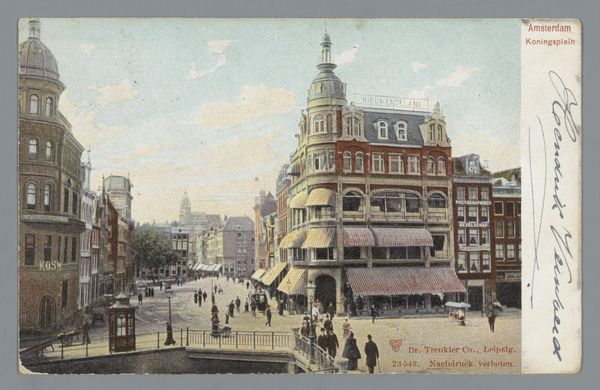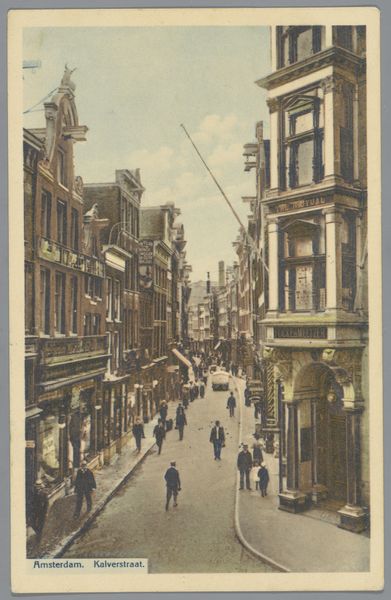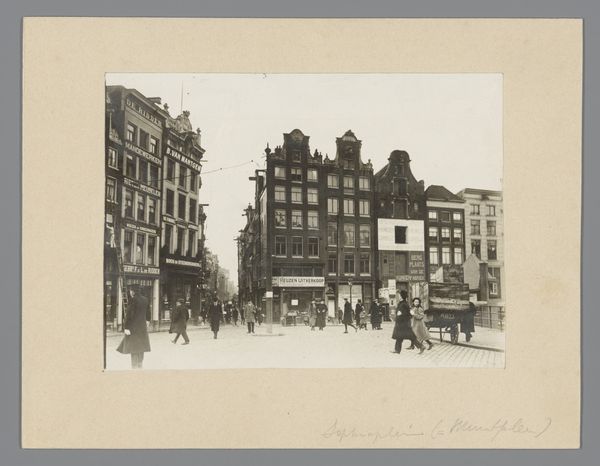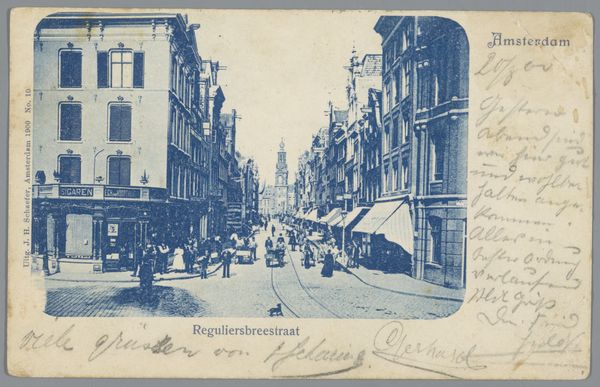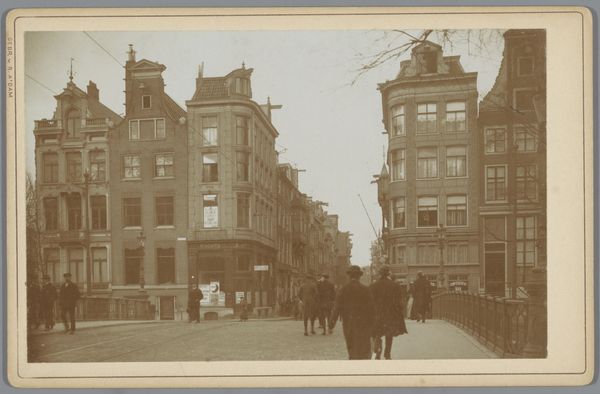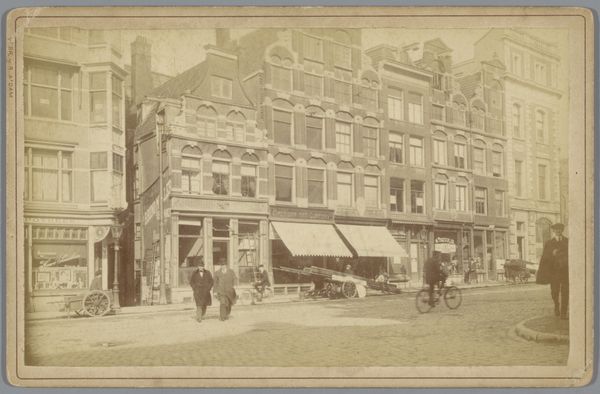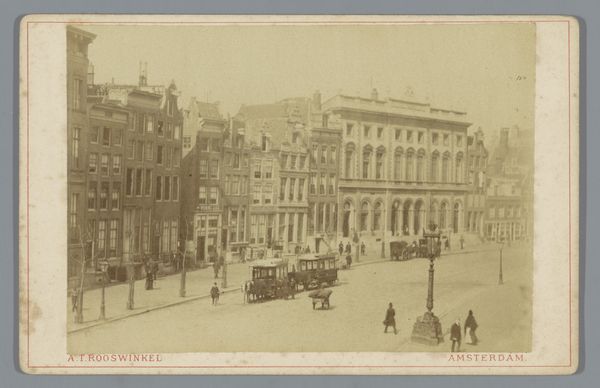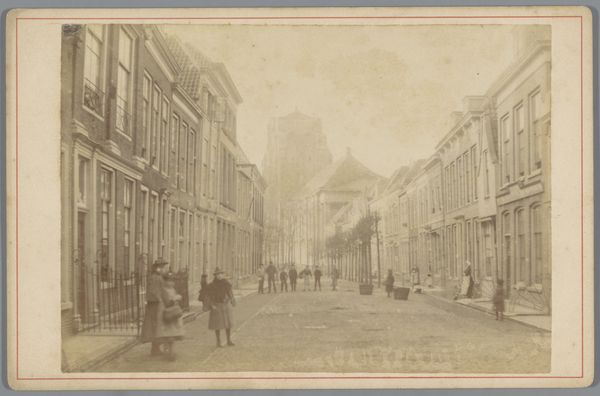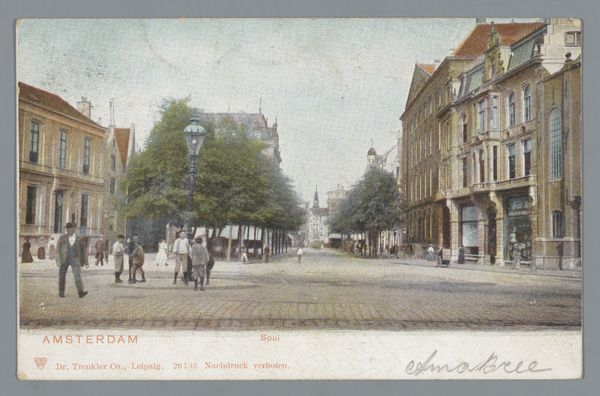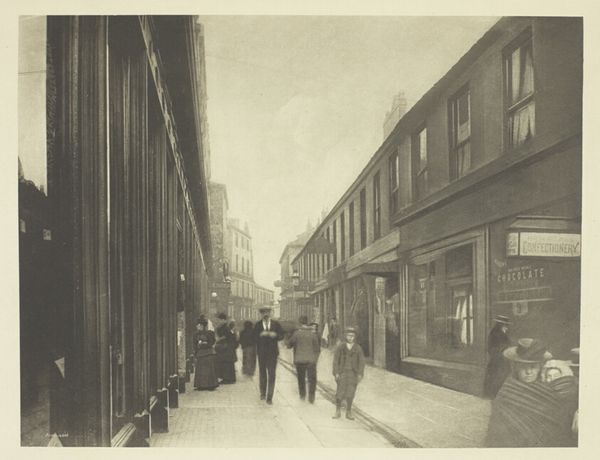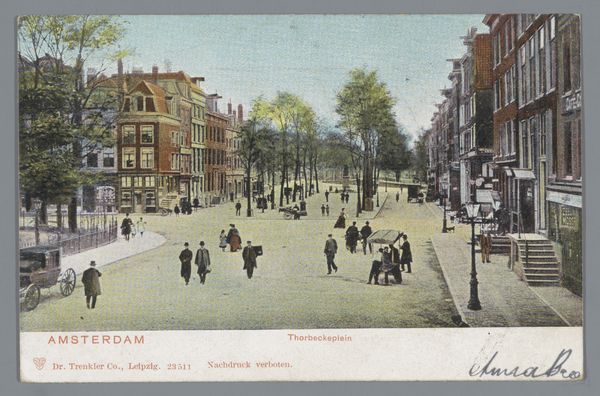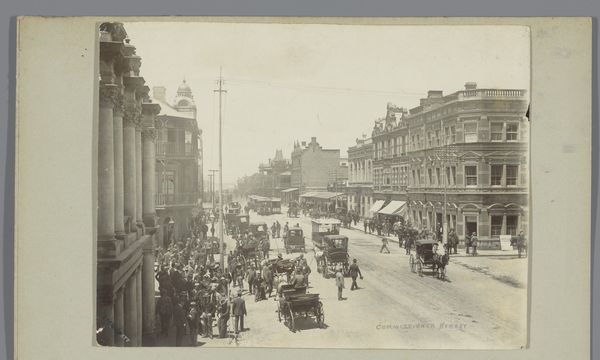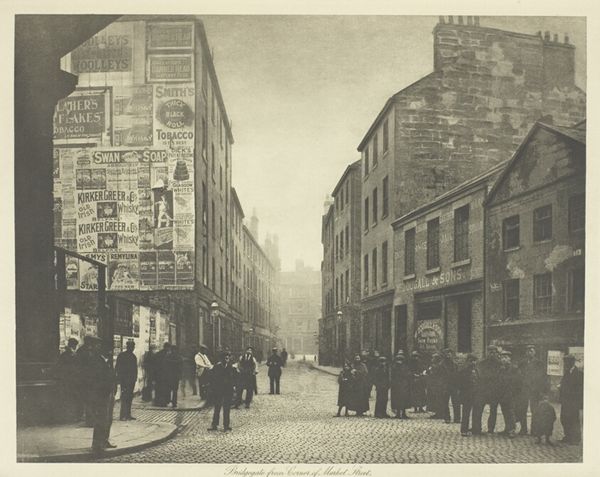
Dimensions: height 92 mm, width 141 mm
Copyright: Rijks Museum: Open Domain
Curator: At first glance, the artwork’s ordered, symmetrical arrangement creates a world that feels still, stable, serene—the muted palette evoking nostalgia or a slightly faded memory. What's your initial take? Editor: It's so intriguing how this cityscape both invites you in and holds you at a distance. This is a mixed media work called "Amsterdam, Reguliersbreestraat," believed to be created sometime between 1890 and 1920 by H.S. Speelman. The blurred figures remind me of ancient Roman street scenes where gods mingled among mortals, not always visible, perhaps, but implied. Curator: Interesting association! It evokes a feeling of transition—urban modernity beginning to take shape. Looking closely, one notices the architecture itself, the rigid vertical lines and repeating shapes creating a formal rigidity against the ephemeral pedestrians and tram. How do the artistic choices represent socio-political elements from the Post-Impressionist moment, when traditional modes of representation are rejected and we enter into explorations of feeling, subjective experience, and symbolic expression? Editor: Well, it's interesting to note that the tram is the focus—an almost allegorical representation of technology bridging different worlds! Then again, it might be that I am overemphasizing the symbol as bridge between these material and immaterial worlds: the figures that populate this street all move along it and are framed by it. It could just be Speelman's commitment to depicting life. Curator: But perhaps the bridge-idea could be understood in how the emerging middle class—enabled by advancing technologies, particularly transit like the tram—began occupying an ambiguous place within society? Their movement up the social and economic ladder destabilized the status quo while bolstering nascent consumer culture. The figures and building represent these complex power dynamics and shifting public behaviors within Dutch culture, and the Post-Impressionistic style certainly challenges any singular notion of national identity. Editor: So, this piece invites reflection. It reveals much about our connection to what has gone before while hinting at worlds unknown. Curator: Indeed. It seems to provoke a questioning spirit. An urge to understand more deeply the connection between image, identity, and environment.
Comments
No comments
Be the first to comment and join the conversation on the ultimate creative platform.
